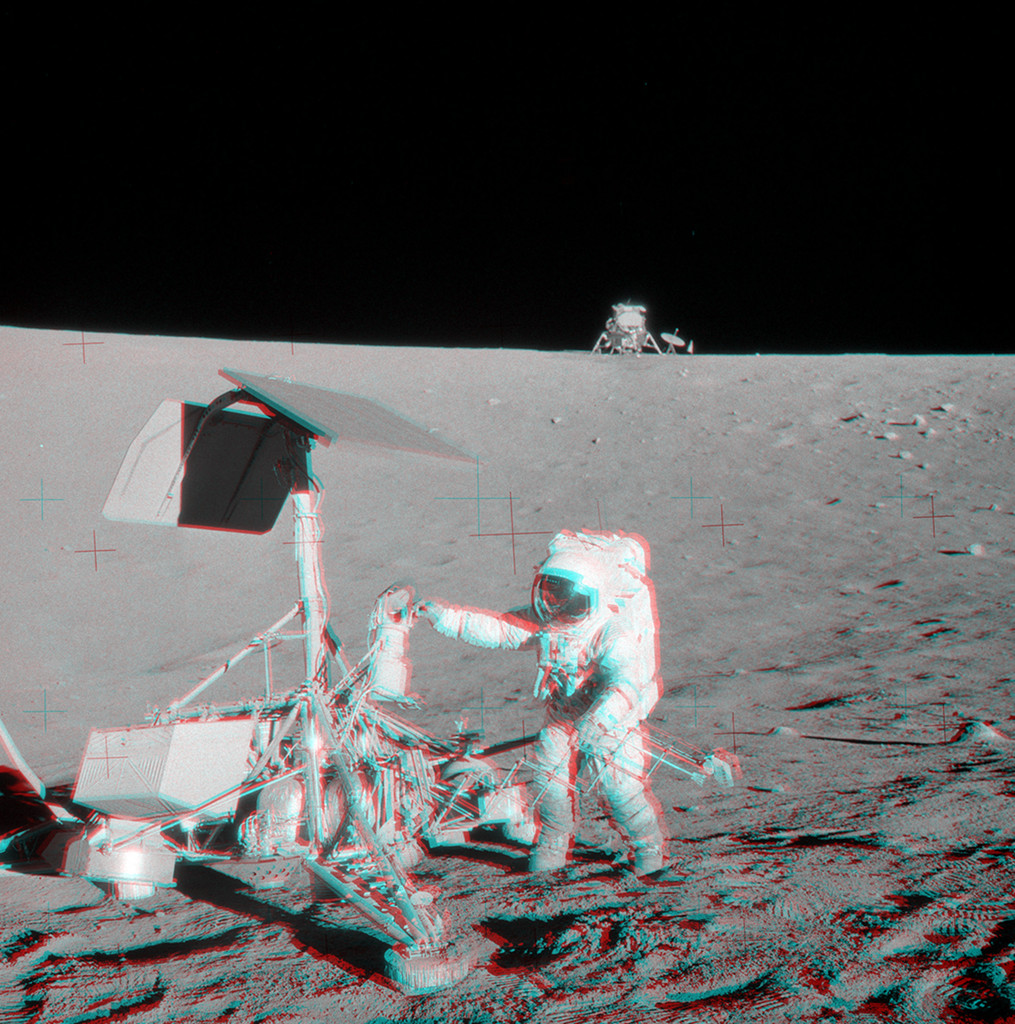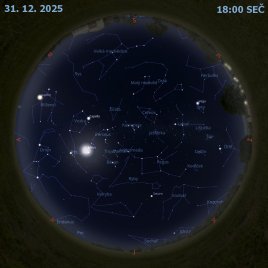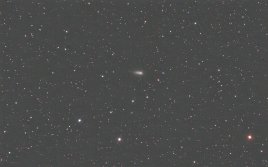Apollo 12 a Surveyor 3

Uznání: NASA, Apollo 12, Alan Bean - Stereo Image Copyright: Kevin Frank
Nasaďte si
červenomodré brýle
a podívejte se na povrch Měsíce přes západní
Oceán bouří.
Na 3D anaglyfu je vidět
astronaut Apolla 12 Pete Conrad, který v listopadu 1969 navštívil kosmickou sondu
Surveyor 3.
Surveyor 3 tam přistál
o dva a půl roku dříve v dubnu 1967 na vnitřním svahu malého kráteru.
Na obzoru za vzdálenou stěnou kráteru byl vidět
lunární modul Apolla 12 Intrepid,
který přistál ve vzdálenosti necelých 200 metrů, což byla k sondě Surveyor snadná procházka.
Stereosnímek byl pečlivě sestaven ze dvou samostatných snímků
(AS12-48-7133, AS12-48-7134)
pořízených na
měsíčním povrchu.
Zobrazují scénu jen z mírně odlišných úhlů pohledu, což se blíží rozteči lidských očí.
Oprava: Na překlep ve slově listopadu upozornil Petr Zoufalý.
Seznam odkazů v popisu
- Wikipedia: File:Anaglyph_glasses.png
- AlanBeanGallery.com: TipToeing On The Ocean Of Storms
- NASA: Apollo 12 Anaglyph Gallery
- APOD: 2018-10-22 Apollo 12 navštívilo Surveyor 3
- APOD: 1999-04-08 Apollo 12: Surveyor 3 a Intrepid
- NASA: Apollo 12 Lunar Module / ALSEP - NSSDCA/COSPAR ID: 1969-099C
- NASA: AS12-48-7133, AS12-48-7134
- NASA: Apollo Lunar Surface Journal
NASA Official: Phillip Newman Specific rights apply. NASA Web Privacy Policy and Important Notices
A service of: ASD at NASA / GSFC & Michigan Tech. U.
Odkaz na originální APOD


